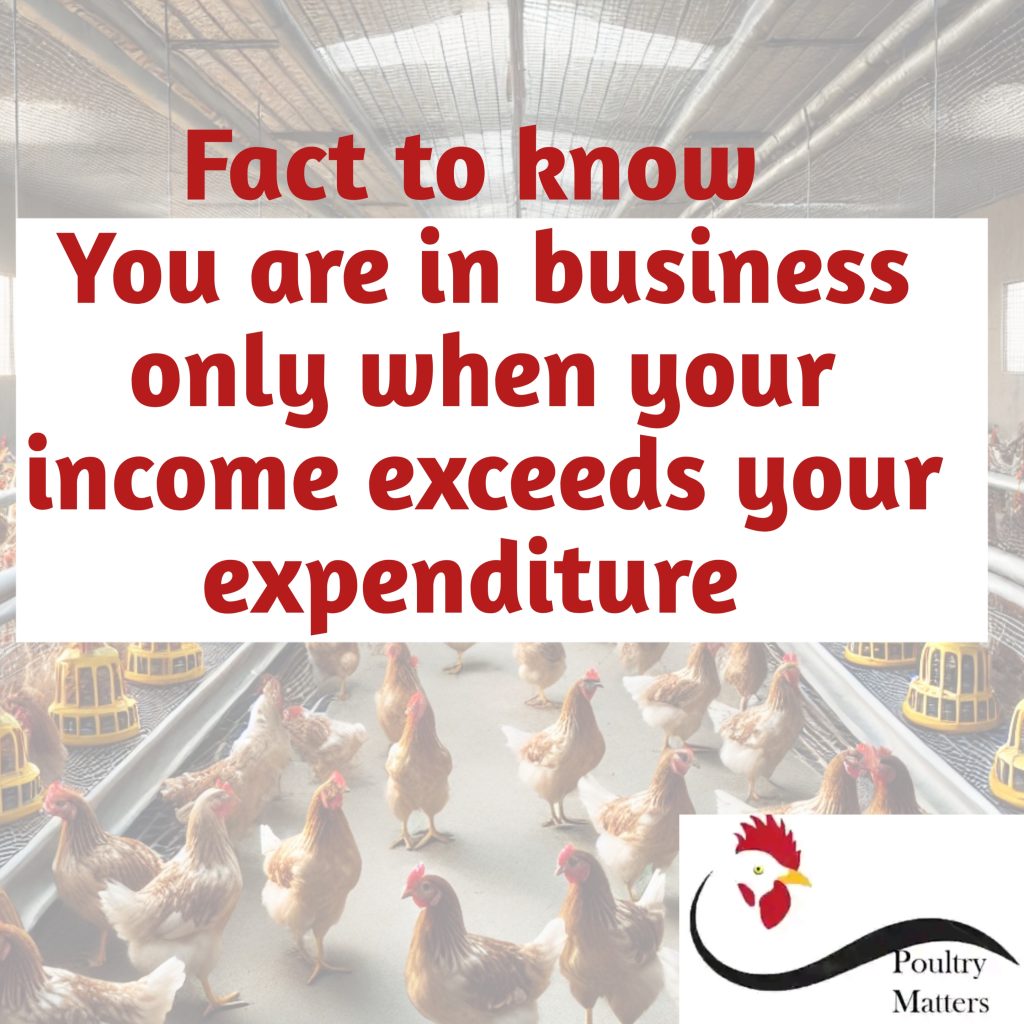Profit planning in poultry – how to budget, track activities and grow your farm
Running a poultry farm is not just about raising healthy birds — it is also about running a sustainable business. Many poultry farmers focus heavily on production but pay little attention to financial planning. Without proper budgeting and record-keeping, even a well-managed flock can result in losses. Profit planning is therefore one of the key pillars for building a profitable and sustainable poultry enterprise.
What is profit planning in poultry business?
Profit planning in poultry farming is a structured financial management approach that involves setting clear financial goals, developing a realistic budget, monitoring expenses and tracking revenue to ensure sustained profitability. It enables farmers to understand cost structures, allocate resources efficiently and make data-driven decisions that support long-term growth and stability of the enterprise.
Why is profit planning necessary in poultry business?
Profit planning is an essential tool for the sustainability and success of any poultry farm enterprise. It goes beyond routine record-keeping by providing farmers with a proactive strategy for financial stability and long-term growth. The benefits of poultry farming is manifest in the following ways:
- Prevents Financial Surprises: Profit planning allows farmers to forecast cash flow requirements, anticipate seasonal variations and prepare for major expenses such as feed purchases or equipment repairs. This foresight minimizes the risk of unexpected financial strain.
- Enhances Operational Efficiency: By proper tracking of cash inflow and outflow, the farmers can clearly identify areas of wastage, reduce unnecessary costs and channel resources toward farm activities that maximize returns. This leads to more efficient farm operations.
- Facilitates Business Growth: Clear financial records and structured profit plans strengthen credibility with banks, investors and development partners. This opens opportunities for securing loans, attracting investment and expanding production capacity.
- Builds Financial Resilience: Poultry farming is vulnerable to risks such as fluctuating feed prices, disease outbreaks and changing market conditions. Therefore, smart profit planning provides a financial buffer, enabling farmers to absorb shocks and maintain stability during challenging times.
Key steps in profit planning –
- Cost planning – Budgeting by properly planning your expenses is the backbone of profit planning. A good poultry budget includes the following items –
- Fixed costs: Housing, equipment, water supply, lighting systems.
- Variable costs: Feed, vaccines, labor, litter materials, transportation.
- Revenue projections: Sales of eggs, broilers, spent layers, manure or chicks.
Tip: Always budget conservatively—assume higher expenses and slightly lower sales prices to absorb shocks.
b) Tracking Expenses and Income – Keeping accurate records is critical. Every bag of feed, every vaccine, every bird and crate of eggs sold should be documented. Tools you can use for valid documentation include:
- Farm record books (manual)
- Excel sheets (digital)
- Farm management software/apps (automated tracking)
Proper record keeping helps you monitor profit margins and quickly identify where money is being lost.
c) Analyzing Break-Even Point – The break-even point is when your total revenue equals your total cost. Knowing this helps you set production targets and pricing more effectively.
d) Monitoring Cash Flow – Cash flow is the lifeblood of your farm. Ensure that you have enough funds at every stage of the production cycle — especially for feed and vaccines, which are time-sensitive. Delays in these areas can cause losses greater than the cost itself.
e) Planning for Growth – Expansion of the farm operations must be intentional. Once your farm is consistently earning profit, the follow can be embarked on:
- Reinvest profits into farm expansion (e.g., adding housing units, buying better equipment).
- Increase farm revenue streams (e.g., by selling poultry manure, offering day-old chicks or processing poultry meat).
- Explore bulk buyer contracts (e.g., restaurants or institutional supply deals for steady income.
Practical Tools for Poultry Profit Planning
Effective profit planning in poultry farming requires not just good intentions but the right tools to monitor, control and evaluate financial and operational performance. Some key tools include:
- Budget Templates: Develop structured budgets tailored to production cycles, whether for layers or broilers. These templates should account for fixed costs (housing, equipment, labor) and variable costs (feed, vaccines, utilities) to provide a clear picture of expected income and expenses.
- Farm Diaries: Maintain comprehensive records of daily farm activities, including feed usage, egg collection, bird health and medication. Integrating these with financial entries helps farmers’ link operational practices directly to profitability outcomes.
- Monthly Financial Reviews: Regularly assess performance by comparing actual expenses and revenues against the budgeted figures. This process highlights variances, identifies problem areas and guides timely corrective actions.
- Key Performance Indicators (KPIs): Track critical metrics such as feed conversion ratio (FCR), mortality rate, cost per egg and profit per bird. These indicators provide measurable insights into productivity, efficiency and profitability. Consequently, it promotes data-driven decision-making.
Conclusion
Profit planning in poultry farming is not just an accounting exercise — it is a growth strategy. By budgeting wisely, keeping accurate records, analyzing your break-even point and monitoring cash flow. This process helps you transform your poultry farm into a stable and profitable business.
Remember: what gets measured gets managed. The farmer who tracks and plans finances carefully will always have an edge over the one who only focuses on production.

